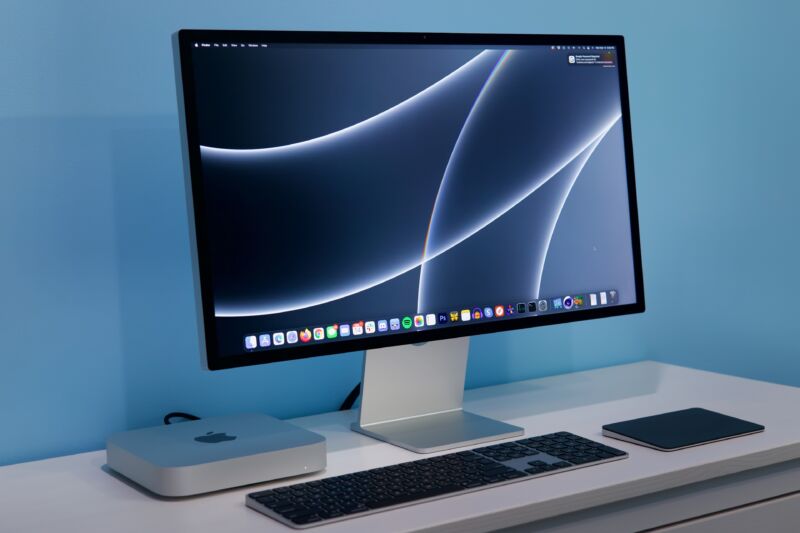
Enlarge / Apple's Studio Display. (credit: Andrew Cunningham)
One thing that makes Apple's Studio Display monitor unique—aside from the native 5K display resolution—is that there's basically an iPad inside of it. The monitor includes an Apple A13 chip and 64GB of storage to power some of its smart features, and like any of Apple's other iDevices, it can receive iOS-based firmware updates to add new features and fix bugs.
But also like Apple's other iDevices, this means that you'll sometimes run into problems installing the latest updates for your Studio Display. That was the case over the weekend for some users of the new Studio Displays from Apple who found that they couldn't update the factory firmware (version 15.3) to the latest version (15.4).
The reason the update stopped working is likely related to how Apple handles iOS software updates. Apple verifies an iOS update file's digital signature before allowing installation to prevent the installation of updates that contain malware or other modifications. And to prevent downgrading to older iOS versions, Apple will typically only allow installation of the one or two most recent iOS updates at any given time. When a new iOS version is released, as iOS 15.4.1 was on March 31, Apple will stop signing the previous version (in this case, iOS 15.4) shortly after.
Read 3 remaining paragraphs | Comments

Enlarge / Apple's Studio Display. (credit: Andrew Cunningham)
One thing that makes Apple's Studio Display monitor unique—aside from the native 5K display resolution—is that there's basically an iPad inside of it. The monitor includes an Apple A13 chip and 64GB of storage to power some of its smart features, and like any of Apple's other iDevices, it can receive iOS-based firmware updates to add new features and fix bugs.
But also like Apple's other iDevices, this means that you'll sometimes run into problems installing the latest updates for your Studio Display. That was the case over the weekend for some users of the new Studio Displays from Apple who found that they couldn't update the factory firmware (version 15.3) to the latest version (15.4).
The reason the update stopped working is likely related to how Apple handles iOS software updates. Apple verifies an iOS update file's digital signature before allowing installation to prevent the installation of updates that contain malware or other modifications. And to prevent downgrading to older iOS versions, Apple will typically only allow installation of the one or two most recent iOS updates at any given time. When a new iOS version is released, as iOS 15.4.1 was on March 31, Apple will stop signing the previous version (in this case, iOS 15.4) shortly after.
Read 3 remaining paragraphs | Comments
April 12, 2022 at 12:20AM

Post a Comment